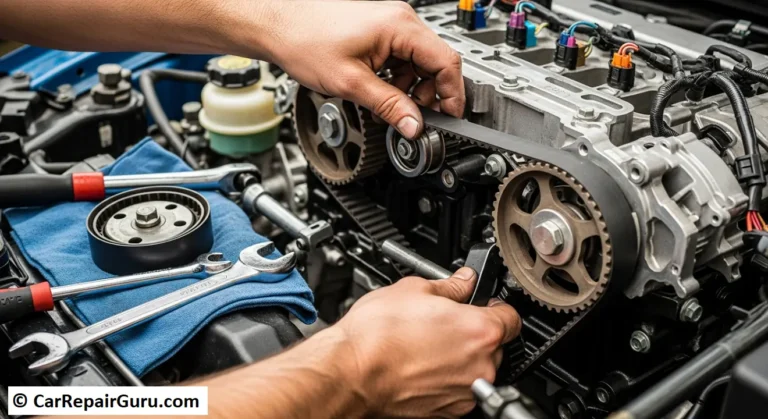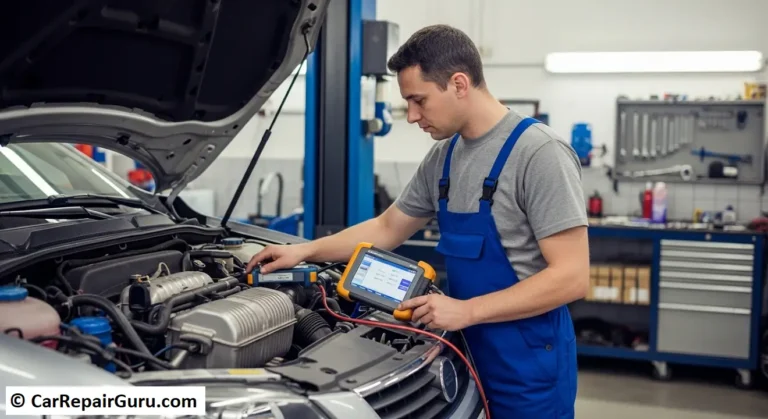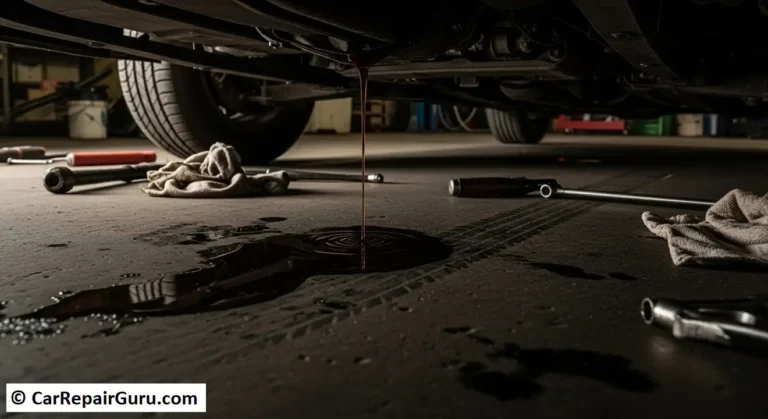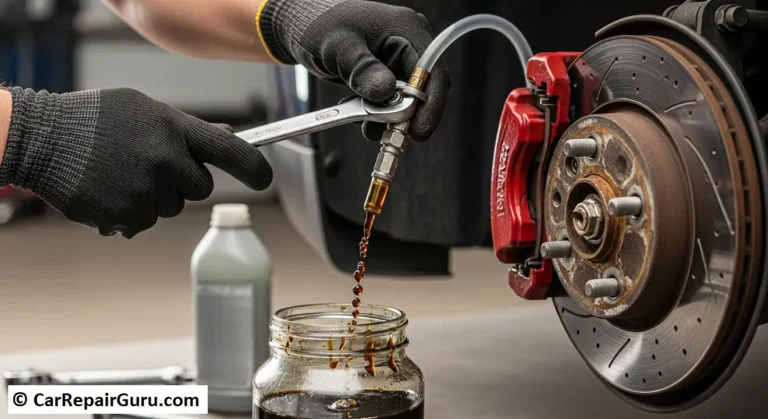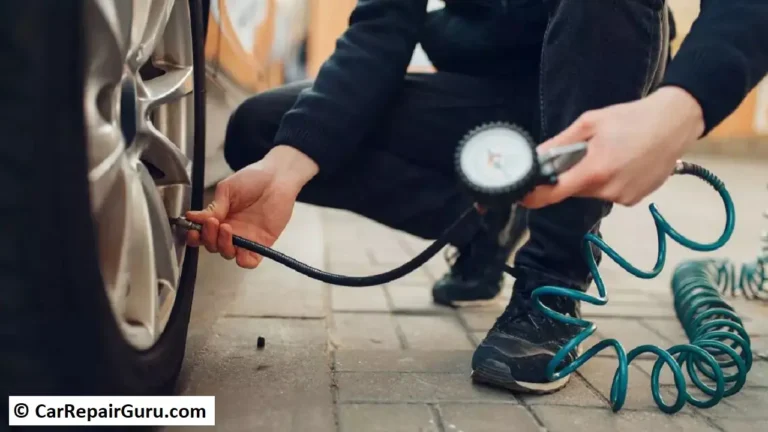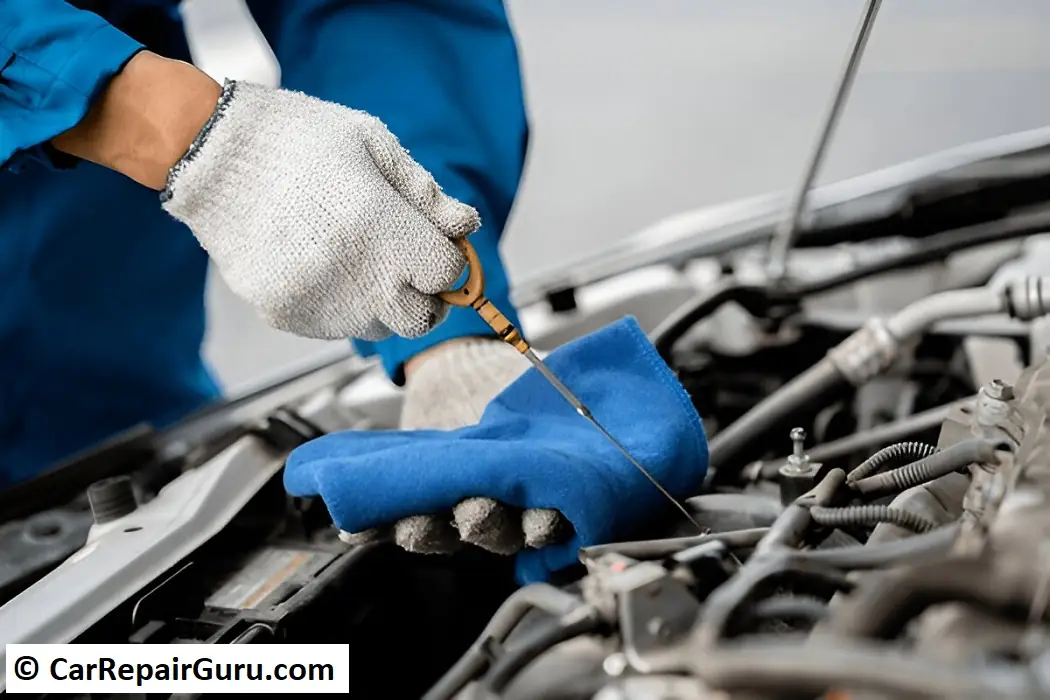
When was the last time you checked your car fluids? Regular car fluid checks are vital to keep your vehicle running smoothly and safely. These fluids act as lifelines for your car, ensuring everything from the engine to the brakes functions correctly. Ignoring them can lead to overheating, poor performance, or even major breakdowns.
In this guide, we’ll take you through the essential fluids your car relies on—like engine oil, coolant, and brake fluid—and show you how to check them step by step. Whether you’re a seasoned driver or a car maintenance newbie, you’ll find these tips easy to follow and practical.
Let’s dive into the world of car fluids and learn how to make your vehicle last longer while saving on costly repairs.
Engine Oil Check
Function of Engine Oil in Lubrication and Cooling
Engine oil is critical to your car’s performance and longevity. It lubricates the engine’s moving parts, reducing friction and preventing metal components from grinding against each other. This not only minimizes wear and tear but also helps in regulating engine temperature by dispersing heat generated during operation. Without sufficient oil, your engine could overheat, seize up, or suffer permanent damage.
Steps to Check Engine Oil Levels Effectively
- Park and Cool Down: Park your car on a flat surface and turn off the engine. Let it cool for at least 5–10 minutes.
- Locate the Dipstick: Open the hood and find the dipstick, usually with a brightly colored handle for easy identification.
- Clean and Reinsert: Pull out the dipstick, wipe it clean with a lint-free cloth, and reinsert it fully.
- Check the Level: Remove the dipstick again and observe the oil level. It should be between the “MIN” and “MAX” markers.
- Top-Up if Needed: If the level is low, add the recommended type of oil gradually, checking the level after each pour.
Suggested Frequency
To avoid engine damage, check your oil at least once a month or every 1,000 miles. Regular checks can prevent costly repairs and keep your car running smoothly.
Coolant (Antifreeze) Inspection
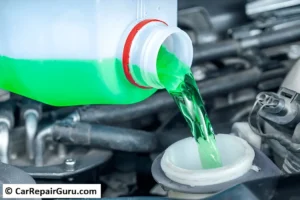
Role of Coolant in Preventing Overheating
Coolant, often referred to as antifreeze, is essential for maintaining your car’s engine temperature. It circulates through the engine, absorbing heat and preventing it from overheating during operation. In colder climates, it also keeps the engine from freezing. Without the proper level of coolant, your car’s engine is at risk of severe damage due to overheating or freezing.
Step-by-Step Guide for Coolant Level Checks
- Ensure the Engine is Cool: Always check coolant levels when the engine is cold to avoid burns from pressurized hot fluid.
- Locate the Coolant Reservoir: Open the hood and identify the translucent plastic tank, usually labeled with “MIN” and “MAX” level markers.
- Check the Level: Visually inspect the fluid level without removing the radiator cap. The coolant should sit between the “MIN” and “MAX” lines.
- Refill if Needed: If the level is low, add a 50/50 mixture of coolant and water. Use the type specified in your vehicle’s manual.
Common Issues When Coolant Levels are Low
- Overheating Engine: The temperature gauge rising into the “hot” zone indicates low coolant.
- Leaking Coolant: Puddles of brightly colored fluid under your car may signal a leak.
- Air in the System: This can cause erratic temperature changes, requiring a professional to bleed the system.
Regular coolant checks every 3–6 months help prevent overheating and ensure your car’s smooth operation.
Brake Fluid Levels
Why Brake Fluid is Critical for Safe Braking
Brake fluid is the backbone of your car’s braking system. It transfers the force from your foot on the brake pedal to the brake components that stop the car. This hydraulic fluid works under intense pressure and heat, ensuring responsive and efficient braking. Without adequate or clean brake fluid, your brakes could feel spongy, take longer to engage, or fail entirely—putting you at serious risk on the road.
How to Inspect Brake Fluid in Your Car
- Locate the Brake Fluid Reservoir: Open the hood and find the reservoir, typically near the back of the engine bay, on the driver’s side. It’s usually marked with a “Brake Fluid” label.
- Check the Fluid Level: Look through the translucent reservoir. The fluid should be between the “MIN” and “MAX” lines.
- Inspect Fluid Color: Healthy brake fluid is typically clear or slightly yellow. Dark or murky fluid indicates contamination and should be replaced.
Warning Signs of Contaminated or Low Brake Fluid
- Spongy Brake Pedal: Indicates air or moisture in the system.
- Brake Warning Light: A clear indicator to inspect fluid levels immediately.
- Leaking Fluid: Puddles under the car or around the wheels might signal a leak.
Check your brake fluid every six months and replace it according to your vehicle’s manual, typically every 2–3 years, to maintain peak braking performance.
Transmission Fluid Monitoring
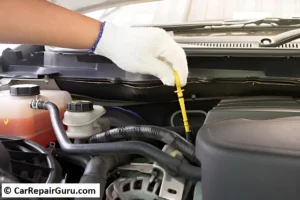
Importance of Transmission Fluid for Smooth Gear Shifts
Transmission fluid is essential for ensuring smooth and efficient gear shifts in both automatic and manual vehicles. It lubricates the moving parts within the transmission, reduces friction, and helps regulate temperature. Without sufficient or clean transmission fluid, you may experience delayed gear engagement, slipping, or jerky shifts, which can lead to costly repairs.
Procedure for Checking Transmission Fluid Levels
- Warm Up the Engine: Start your car and let it idle for a few minutes to ensure the transmission fluid is warm.
- Locate the Dipstick: Open the hood and find the transmission dipstick, usually near the back of the engine bay. (For manual transmissions, this process may require a mechanic.)
- Clean and Check: Remove the dipstick, wipe it clean, reinsert it fully, and then pull it out again to check the fluid level. The fluid should sit between the “MIN” and “MAX” marks.
- Inspect the Fluid Condition: Healthy transmission fluid is typically red or pink. If it appears dark, cloudy, or has a burnt smell, it needs replacing.
When to Replace the Transmission Fluid
Most manufacturers recommend replacing transmission fluid every 30,000 to 60,000 miles, depending on the vehicle and driving conditions. Regular maintenance ensures smoother shifts and extends the lifespan of your transmission.
Power Steering Fluid
Purpose of Power Steering Fluid in Vehicle Control
Power steering fluid is essential for easy and precise steering. It provides the hydraulic pressure needed to help turn the wheels, especially at low speeds or during tight maneuvers. Without it, steering becomes stiff and difficult, leading to reduced vehicle control and increased driver fatigue.
Simple Method to Check Power Steering Fluid
- Locate the Reservoir: Open the hood and find the power steering fluid reservoir, typically marked with a steering wheel icon.
- Check the Level: Most reservoirs are translucent, allowing you to see the fluid level against the “MIN” and “MAX” markers.
- Inspect the Fluid Condition: Healthy fluid is usually clear, amber, or pink. Dark or contaminated fluid indicates the need for a change.
Symptoms of Insufficient Fluid and Potential Risks
- Stiff or Noisy Steering: Difficulty turning the wheel or hearing whining noises during steering.
- Leaking Fluid: Puddles of fluid under the car may signal a leak.
- Increased Wear on Components: Low fluid can cause damage to the power steering pump, leading to costly repairs.
Check power steering fluid monthly to ensure smooth and safe vehicle operation.
Windshield Washer Fluid
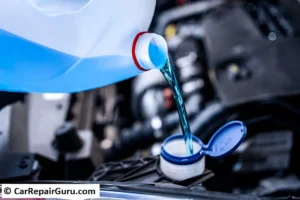
Importance of Clear Windshields for Visibility
A clean windshield is crucial for safe driving, as it ensures clear visibility in all conditions. Dust, dirt, bird droppings, or road grime can obstruct your view and increase the risk of accidents, especially during harsh weather. Windshield washer fluid helps dissolve stubborn debris, making it easier for your wipers to maintain a spotless surface.
Quick and Easy Steps to Refill Washer Fluid
- Locate the Reservoir: Open the hood and find the windshield washer fluid reservoir, usually marked with a windshield and water spray icon.
- Check Fluid Level: Look inside the translucent reservoir to see if it’s low.
- Refill: Pour washer fluid into the reservoir until it reaches the “MAX” line. Avoid using plain water, as it can freeze in colder climates or fail to clean effectively.
Regularly checking and refilling washer fluid ensures a clear and safe view of the road.
Differential and Transfer Case Fluids
Function in Drivetrain Lubrication
Differential and transfer case fluids play a vital role in lubricating the drivetrain components, including the gears and bearings. These fluids reduce friction, dissipate heat, and ensure smooth power transfer from the engine to the wheels, especially in four-wheel and all-wheel-drive vehicles. Without adequate lubrication, these components can wear out prematurely, leading to costly repairs and reduced vehicle performance.
Checking These Fluids During Regular Maintenance
- Locate the Drain and Fill Plugs: Under the vehicle, identify the plugs on the differential or transfer case.
- Inspect Fluid Levels: Remove the fill plug and check if the fluid is at the recommended level. A dipstick or finger test is often used.
- Examine Fluid Condition: Healthy fluid is typically clear or slightly golden. Dark, gritty, or burnt-smelling fluid indicates contamination or degradation.
Recommended Intervals for Replacement
Most manufacturers recommend replacing differential and transfer case fluids every 30,000 to 60,000 miles. For vehicles used in off-road or heavy-duty conditions, check and replace fluids more frequently to maintain optimal drivetrain performance.
Clutch Fluid for Manual Transmissions
Explanation of Clutch Fluid’s Role in Manual Cars
Clutch fluid, typically brake fluid, is crucial in manual transmissions as it powers the hydraulic system that engages and disengages the clutch. It ensures smooth gear shifts by transferring force from the clutch pedal to the clutch mechanism. Without enough or clean fluid, the clutch may feel spongy, gear shifts can become difficult, and overall vehicle performance may suffer.
How to Inspect and Top Up Clutch Fluid
- Locate the Reservoir: Find the small reservoir near the brake fluid tank under the hood.
- Check Fluid Level: Ensure the fluid is between the “MIN” and “MAX” markers.
- Top Up if Needed: Add the recommended brake fluid type gradually, avoiding overfilling.
Regular clutch fluid checks every few months prevent hydraulic failure and ensure seamless operation of your manual transmission.
Conclusion
Regular car fluid checks are essential for maintaining your vehicle’s performance, safety, and longevity. From engine oil to clutch fluid, each plays a vital role in keeping your car running smoothly and efficiently. Neglecting these fluids can lead to costly repairs, reduced performance, and safety risks on the road.
Incorporating fluid inspections into your routine maintenance schedule is simple and ensures your car stays in peak condition. Whether you perform the checks yourself or consult a professional, consistency is key. Make fluid checks a habit to enjoy a reliable, efficient, and long-lasting driving experience.
FAQs About Car Fluid Checks
How often should you check your car fluids?
It’s recommended to check your car fluids every 4,000 to 6,000 miles or during routine servicing. Some fluids, like engine oil, may require monthly inspections, while others, such as transmission and differential fluids, can be checked less frequently.
What happens if fluid levels are too low?
Low fluid levels can result in severe consequences, including engine overheating, brake failure, steering issues, or transmission damage. Regular checks help prevent these problems and ensure safe driving.
Can I check all car fluids at home?
Yes, most car fluids, such as engine oil, brake fluid, and coolant, can be checked at home with basic tools and the guidance of your vehicle’s manual. However, some, like differential or transfer case fluids, might require professional assistance.
What’s the easiest fluid to refill?
Windshield washer fluid is the simplest to refill. It doesn’t require technical expertise—just open the reservoir, pour the fluid, and close the cap.
By staying informed and proactive about fluid checks, you can keep your car running safely and efficiently.
